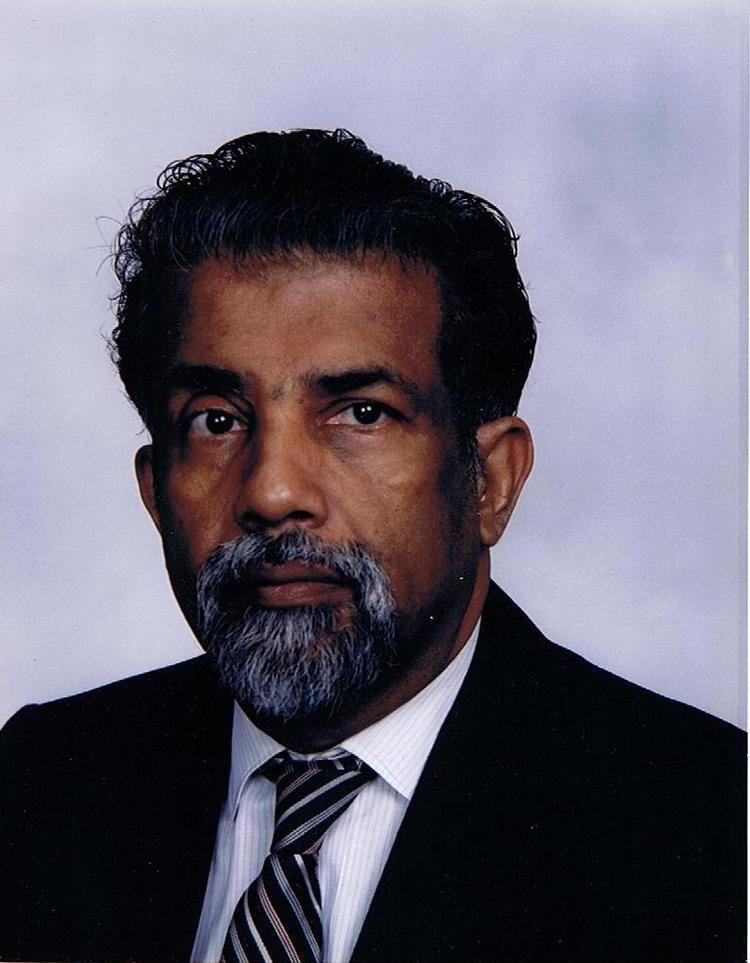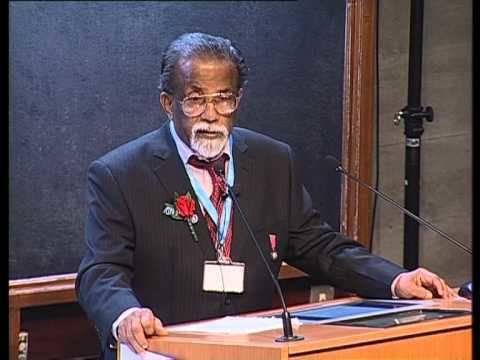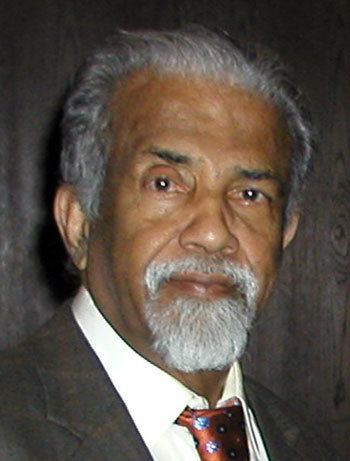Nationality India Role Physicist | Name E. George | |
 | ||
Institutions University of Texas at AustinIndian Institute of ScienceInstitute of Mathematical Sciences, ChennaiHarvard UniversityUniversity of RochesterTata Institute of Fundamental Research Alma mater Madras Christian CollegeUniversity of MadrasUniversity of Rochester Doctoral students Mohammad Aslam Khan KhalilNarasimhaiengar MukundaAnil Shaji Known for Optical coherenceSudarshan-Glauber representationV-A theoryTachyonQuantum Zeno effectOpen quantum systemSpin-statistics theorem People also search for Books Fundamentals of Quantum Optics, From Classical to Quantum, Advanced Concepts in Quantu | ||
Residence United States of America | ||
Interview with Great Indian Physicists E. C. George Sudarshan | Asianet News Archives
Ennackal Chandy George Sudarshan (also known as E. C. G. Sudarshan; born 16 September 1931) was an Indian theoretical physicist and a professor at the University of Texas. Sudarshan has been credited with numerous contributions to the field of theoretical Physics including Optical coherence, Sudarshan-Glauber representation, V-A theory, Tachyons, Quantum Zeno effect, Open quantum system, Spin-statistics theorem, non-invariance groups, positive maps of density matrices, quantum computation among others. His contributions include also relations between east and west, philosophy and religion.
Contents
- Interview with Great Indian Physicists E C George Sudarshan Asianet News Archives
- Great Indian Physicists E C George Sudarshan passed away
- Early life
- Career
- Controversy regarding Nobel Prize
- Death
- Awards
- References
Great Indian Physicists E. C. George Sudarshan passed away
Early life

George Sudarshan was born in Pallam, Kerala, India. Despite being raised in a Syrian Christian family, he later left the religion in large part due to marrying Lalita, a Hindu and fellow student. They were married from 1954 to 1990 and have three sons, Alexander, Arvind (deceased) and Ashok. He considers himself a "Vedantin Hindu". He mentions disagreements with the Church's view on God and lack of spiritual experience as reasons why he left Christianity.

He studied at CMS College Kottayam, and graduated with honors from the Madras Christian College in 1951. He obtained his master's degree at the University of Madras in 1952. He moved to Tata Institute of Fundamental Research (TIFR) and worked there for a brief period with Homi Bhabha as well as others. Subsequently, he moved to University of Rochester in New York to work under Robert Marshak as a graduate student. In 1958, he received his Ph.D. degree from the University of Rochester. At this point he moved to Harvard University to join Julian Schwinger as a postdoctoral fellow.
Career
Sudarshan has made significant contributions to several areas of physics. He was the originator (with Robert Marshak) of the V-A theory of the weak force (later propagated by Richard Feynman and Murray Gell-Mann), which eventually paved the way for the electroweak theory. Feynman acknowledged Sudarshan's contribution in 1963 stating that the V-A theory was discovered by Sudarshan and Marshak and publicized by Gell-Mann and himself. He also developed a quantum representation of coherent light later known as Sudarshan–Glauber representation (for which controversially Glauber was awarded the 2005 Nobel prize in Physics ignoring Sudarshan's contributions).
Sudarshan's most significant work might be his contribution to the field of quantum optics. His theorem proves the equivalence of classical wave optics to quantum optics. The theorem makes use of the Sudarshan representation. This representation also predicts optical effects that are purely quantum, and cannot be explained classically. Sudarshan was also the first to propose the existence of tachyons, particles that travel faster than light. He developed formalism called dynamical maps that is one of the most fundamental formalism to study the theory of open quantum system. He, in collaboration with Baidyanath Misra, also proposed the quantum Zeno effect.
Sudarshan and collaborators initiated the "Quantum theory of charged-particle beam optics", by working out the focusing action of a magnetic quadrupole using the Dirac equation.
He has taught at the Tata Institute of Fundamental Research (TIFR), University of Rochester, Syracuse University, and Harvard. From 1969 onwards, he has been a professor of Physics at The University of Texas at Austin and a senior professor at the Indian Institute of Science. He worked as the director of the Institute of Mathematical Sciences (IMSc), Chennai, India, for five years during the 1980s dividing his time between India and USA. During his tenure, he transformed it into a centre of excellence. He also met and held many discussions with philosopher J. Krishnamurti. He was felicitated on his 80th birthday, at IMSc Chennai on 16th Sept, 2011. His areas of interest include elementary particle physics, quantum optics, quantum information, quantum field theory, gauge field theories, classical mechanics and foundations of physics. He is also deeply interested in Vedanta, on which he lectures frequently.
Controversy regarding Nobel Prize
Sudarshan began working on quantum optics at the University of Rochester in 1960. Two years later, Glauber criticized the use of classical electromagnetic theory in explaining optical fields, which surprised Sudarshan because he believed the theory provided accurate explanations. Sudarshan subsequently wrote a paper expressing his ideas and sent a preprint to Glauber. Glauber informed Sudarshan of similar results and asked to be acknowledged in the latter's paper, while criticizing Sudarshan in his own paper. "Glauber criticized Sudarshan’s representation, but his own was unable to generate any of the typical quantum optics phenomena, hence he introduces what he calls a P-representation, which was Sudarshan’s representation by another name", wrote a physicist. "This representation, which had at first been scorned by Glauber, later becomes known as the Sudarshan–Glauber representation."
Sudarshan has been passed over for the Physics Nobel Prize on more than one occasion, leading to controversy in 2005 when several physicists wrote to the Swedish Academy, protesting that Sudarshan should have been awarded a share of the Prize for the Sudarshan diagonal representation (also known as Sudarshan–Glauber representation) in quantum optics, for which Roy J. Glauber won his share of the prize. Sudarshan and others physicists sent a letter to the Nobel Committee claiming that the P representation had more contributions of "Sudarshan" than "Glauber". The letter goes on to say that Glauber criticized Sudarshan's theory—before renaming it the "P representation" and incorporating it into his own work. In an unpublished letter to The New York Times, Sudarshan calls the "Glauber–Sudarshan representation" a misnomer, adding that "literally all subsequent theoretic developments in the field of Quantum Optics make use of" Sudarshan's work— essentially, asserting that he had developed the breakthrough.
In 2007, Sudarshan told the Hindustan Times, "The 2005 Nobel prize for Physics was awarded for my work, but I wasn't the one to get it. Each one of the discoveries that this Nobel was given for work based on my research." Sudarshan also commented on not being selected for the 1979 Nobel, "Steven Weinberg, Sheldon Glashow and Abdus Salam built on work I had done as a 26-year-old student. If you give a prize for a building, shouldn’t the fellow who built the first floor be given the prize before those who built the second floor?"
Death
He died of natural causes at the age of 86 on Sunday, May 13 in Austin, Texas.
